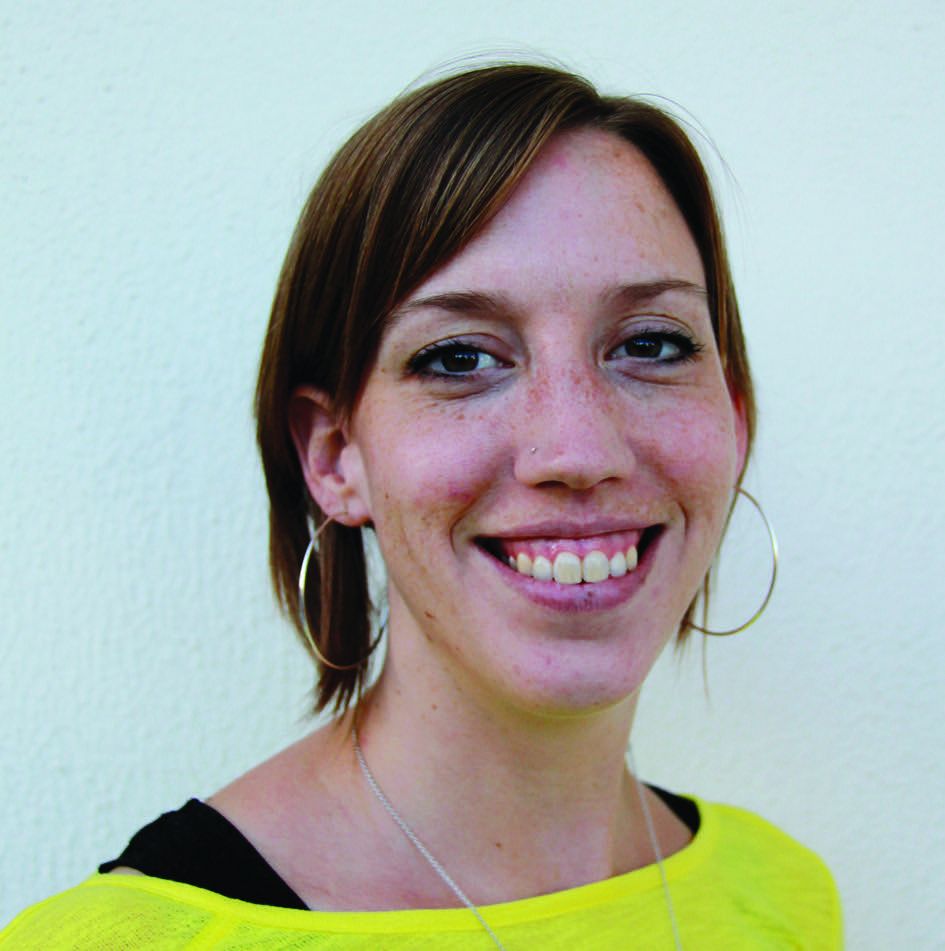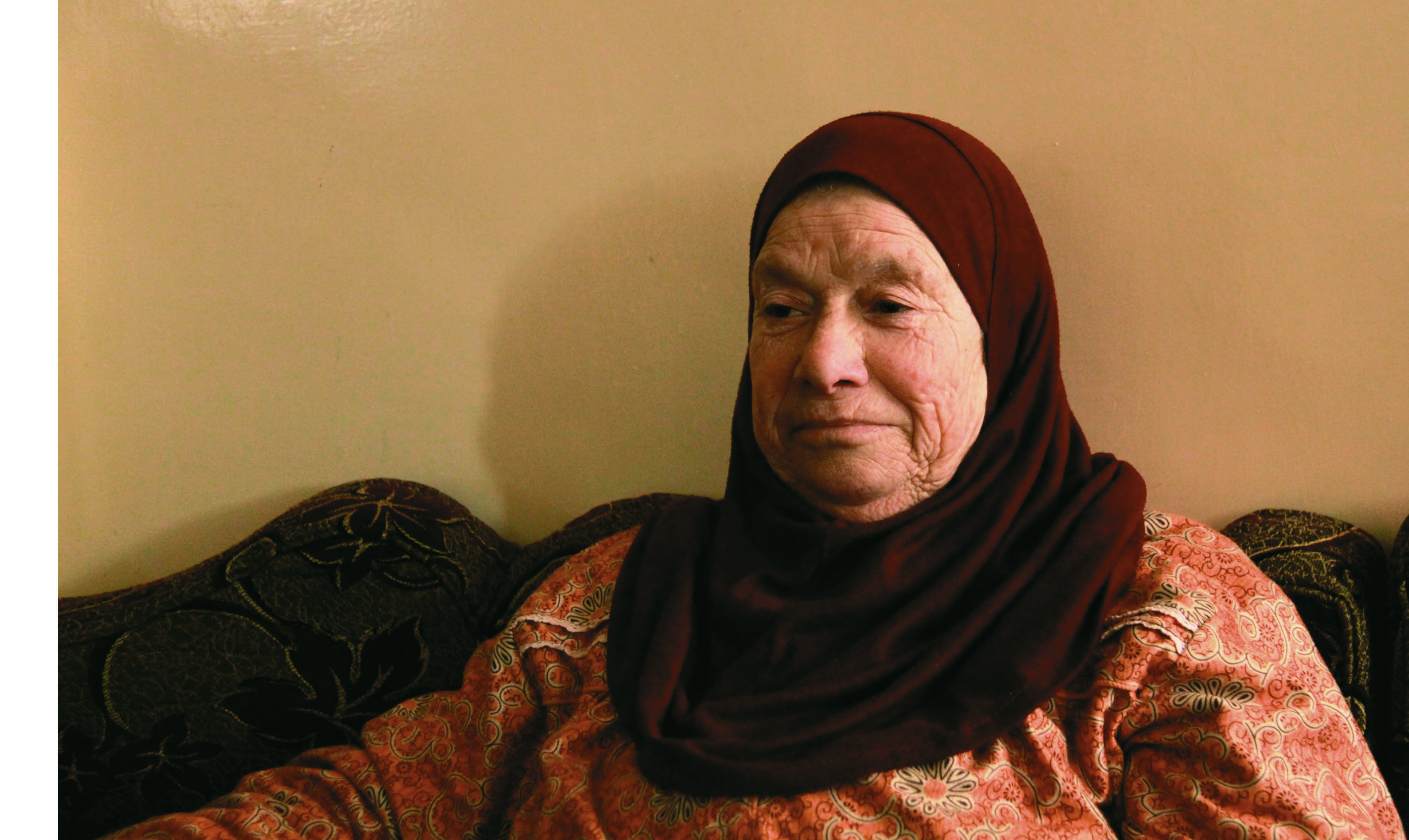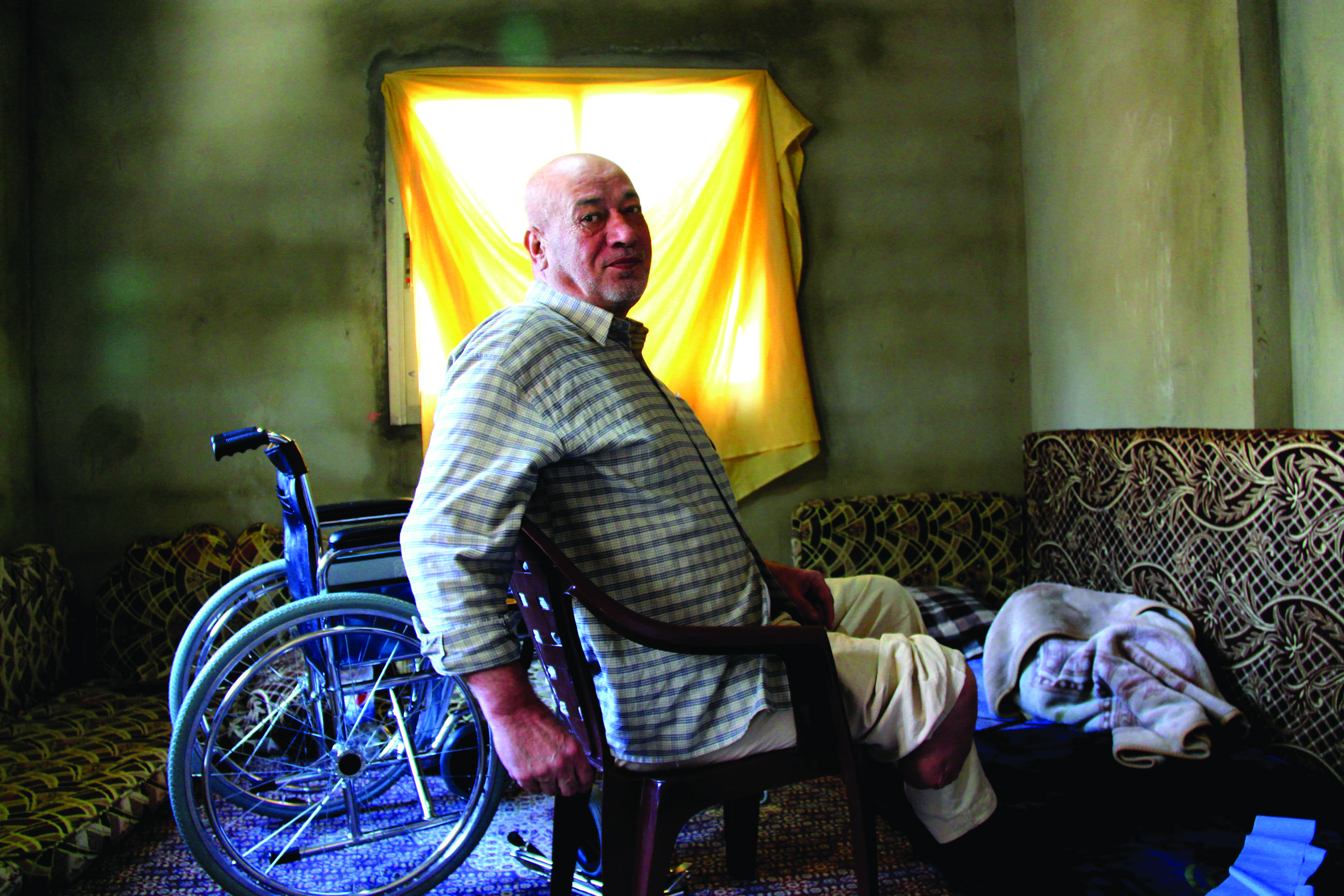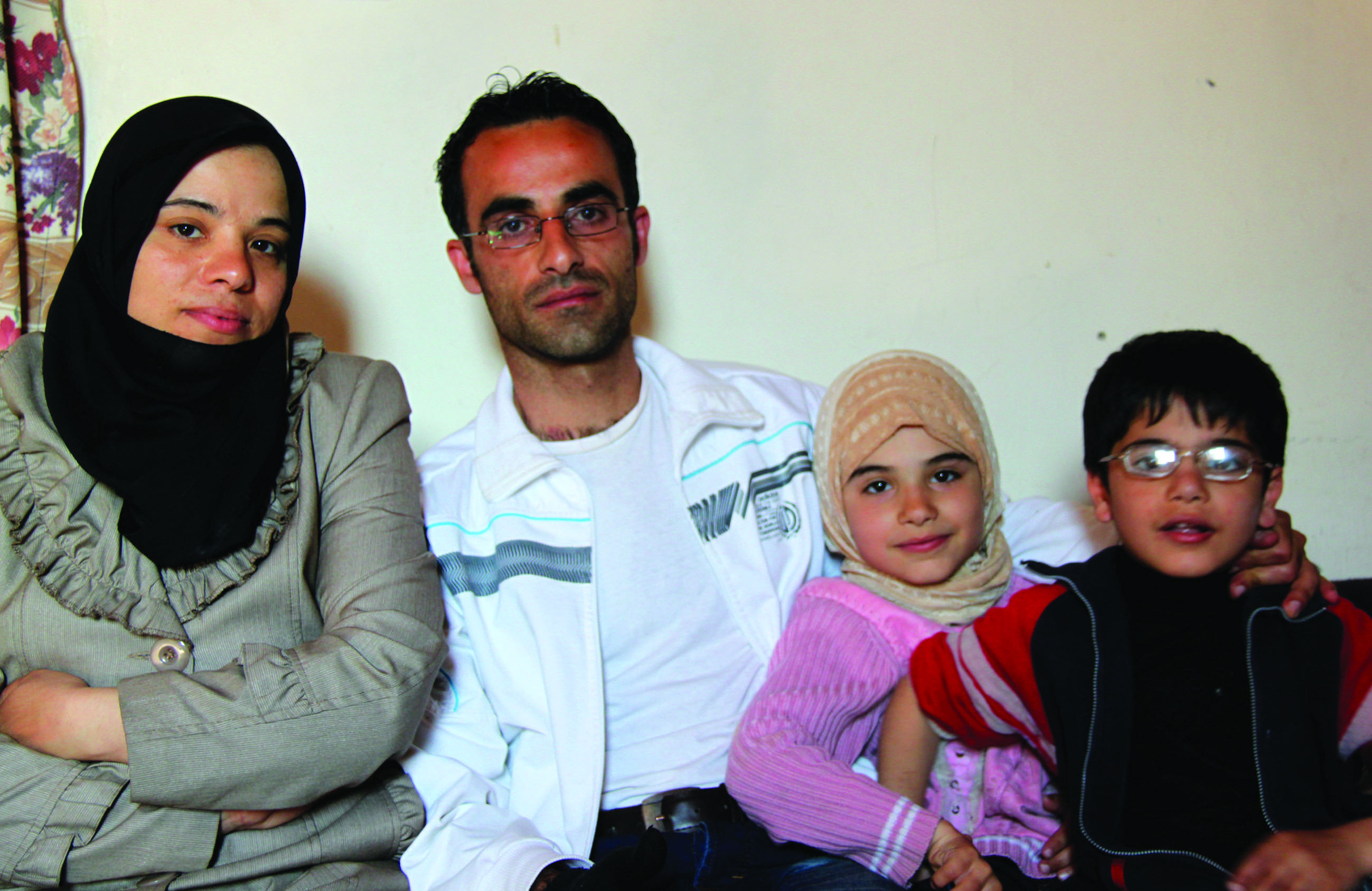The situation of older refugees and refugees with disabilities, injuries, and chronic diseases in the Syria crisis
 By Lydia de Leeuw
By Lydia de Leeuw
Lydia de Leeuw is the Regional Inclusion Programme Manager for both HelpAge International and Handicap International in the Syria crisis. She has extensive experience in the Middle East working on refugee protection, rights based advocacy, research, and project management, and holds a BSc and MSc in Criminology.
Thanks to Becky Achan, Technical Advisor on Inclusion with Handicap International and HelpAge International in Jordan, who helped conceptualise and develop the article outline.
Assisting the most vulnerable in the Syria crisis
The conflict in Syria was triggered by protests in mid-March 2011. Now, three years later, it has evolved into a complex and protracted humanitarian crisis, spilling into neighbouring countries and the wider Middle East region. Nearly three million people have fled Syria and an estimated 9.3 million people are in need of humanitarian assistance across the region. Most refugees live outside of camps in different urban and rural settings. The scale of the Syria crisis is stretching the capacity of humanitarian actors to ensure and maintain standard quality assistance that addresses specific vulnerabilities and needs. A global partnership between HelpAge International and Handicap International led to a decision to address this recurrent issue by initiating a Syrian crisis-focused inclusion programme. The programme is aimed at facilitating the implementation of a principled, inclusive and accessible humanitarian response for the most vulnerable, especially older refugees and refugees with disabilities.
.jpeg?w=225) The inclusion team consist of three experts: one Inclusion Advisor in both Jordan and Lebanon and a Programme Manager at regional level. Their inclusion mainstreaming work focuses on:
The inclusion team consist of three experts: one Inclusion Advisor in both Jordan and Lebanon and a Programme Manager at regional level. Their inclusion mainstreaming work focuses on:
- Capacity building of humanitarian actors to design and implement programmes and activities that are inclusive towards older refugees and refugees with disabilities.
- Providing technical support to humanitarian actors on age and disability inclusion.
- Advocacy and awareness raising on inclusion issues with the coordination structures (working groups, task forces, coordination meetings) and towards donors and authorities.
- Leading coordination on age and disability related issues through the Disability & Older Age Working Group in Lebanon, and the Age & Disability Task Force in Za’atari camp (Jordan).
The main aim of inclusion mainstreaming work is to enhance inclusiveness of the overall response towards the most vulnerable groups, i.e. the persons excluded from services or response and more specifically, older refugees and refugees affected by an injury, disability or chronic condition – as these groups of individuals are most likely to be excluded or invisible. Rather than creating parallel targeted activities and services, the programme seeks the integration of age and disability considerations into the programming of all responding actors.
Vulnerability assessment approach
At the operational level, Handicap International has a distinct approach toward targeting the most vulnerable among the refugee population in Jordan and Lebanon. Using its trademark Disability and Vulnerability Focal Point mechanism (DVFP), the organisation effectively reaches out to refugees at community level and seeks to address the gaps which lead to a lack of access to, or exclusion from, services, which could further lead to increased vulnerability. First, mapping of the context - including available services - is done. Based on that mapping, vulnerability profiles are determined for the different contexts. Both the vulnerability of the household and individuals are taken into account. Subsequently, there are four entry points for new cases to be assessed by Handicap International: via a hotline, through fixed point (Handicap International centre established within community facilities), through referral from outside (including community focal persons), and on-the-spot identification by outreach teams.
For assessing the vulnerability, Handicap International looks at the interaction between personal factors (such as age, gender or disability) and environmental factors (such as access to services or the availability of an assistive device when required). Handicap International assesses basic needs (food, shelter, water, sanitation and hygiene (WASH), health, household essential items, education) as well as specific needs (physical and functional rehabilitation, psychosocial support). Once the person is assessed, the Handicap International referral focal point decides on possible internal and/or external referrals. As much as possible, Handicap International tries to refer to the services that already exist, to avoid duplication. However, whenever the service is not available or is of insufficient quality, Handicap International can provide complementary direct services (see below) which vary depending on the context and the identified gaps. Referrals not only provide information but also establish a connection between the individual or household and the external actor receiving the referral.
Handicap International can directly provide identified beneficiaries with physical and functional rehabilitation and psychosocial support services, as well as with emergency livelihood support such as cash assistance. The cash assistance is unconditional, to support the most vulnerable households to meet their basic needs, including food and shelter. In the Bekaa region of Lebanon, Handicap International also provides newcomers – refugees who have been in the country less than 30 days – with essential household items. This in kind support for newcomers is harmonised throughout Lebanon. The package is comprised of a hygiene kit, a kitchen kit, a baby kit (if needed), mattresses and blankets. The World Food Programme (WFP) complements all Handicap International’s Household Essential Items kits in Bekaa with a food parcel.
Hidden victims of the Syria crisis
Extensive operational experience of Handicap International and HelpAge International has shown that people with disabilities and older people are often overlooked in crises. Due to a variety of obstacles they often face particular difficulty in accessing humanitarian assistance, especially when the available services or facilities are not adapted and not accessible or suitable for them. At the same time, due to their age, serious medical condition and/or disability, these groups are often disproportionally affected by crisis and displacement. Mainstream health responses in humanitarian crises largely fail to address the needs of those with manageable chronic health conditions. People living with non-communicable diseases may face limited access to care and interruption of their treatment. The subsequent interruptions in their treatment can result in severe complications, including stroke (due to hypertension) and gangrene foot or blindness (due to complications of diabetes), which inevitably leads to increasing levels of morbidity, disability, and mortality. During displacement, people – in particular older people – who have specific nutritional needs may face challenges in accessing the food they need. This can lead to both qualitative and quantitative malnutrition. Refugees living with a disability can face protection risks and increased vulnerability due to lack of physically accessible emergency services, breakdown in their support system, or the loss of assistive device(s).
As in many other crises, the Syria crisis response was hampered by a lack of disaggregated data on older refugees, and refugees living with a disabilities, injury, or chronic disease. Therefore, in late 2013, HelpAge International and Handicap International undertook a study in Jordan and Lebanon aimed at creating robust evidence and data on the numbers and basic and specific needs of older refugees and refugees living with an injury, impairment or chronic condition1. The study also compared the needs of these often marginalised groups to the needs of the wider refugee population in these countries.
For the data collection, 3,202 refugees were surveyed in seven governorates in Jordan and Lebanon. All members of households were enumerated, interviewed and screened. Older people were identified as those aged 60 years and above. The survey found that 22% were affected by an impairment, of which 6% were affected by a severe impairment. One in five surveyed refugees was living with more than one impairment. Older people were disproportionately affected by impairments, with a staggering 70% of those aged above 60 years presenting with at least one impairment. Older people were also almost twice as likely as children to present with intellectual impairments. In the study it was found that of the surveyed refugees, 15.6% were affected by chronic disease. An age analysis showed there are three main profiles affected: people aged up to 30 years, of whom 10% are affected by chronic diseases; those aged 30-50 years, of whom 30% are affected; and those aged 50 years or over, of whom half are affected. This profile of different age groups and prevalence of chronic conditions can be instrumental to inform the design and delivery of health services in the Syria response.
The Syrian conflict has been noted for its highly disabling impact on the Syrian population due to the levels of conflict related injuries. This was confirmed by this study in which 5.7% of surveyed refugees have a significant injury, i.e. one that has an impact on body function and hence a potentially disabling effect. The overwhelming majority – 4 out of 5 injuries – was directly caused by the conflict. This means that in Jordan, 1 in 15 Syrian refugees have been injured as a result of the war. In Lebanon this is 1 in 30 refugees. Consistent with the nature of the conflict, bombing, shrapnel wounds and gunshots account for a large proportion of injuries (58%). Additionally, of those reporting injury, 25% resulted from accidents such as falls and burns – accidents that become more common by living in homes damaged by the conflict or fleeing attack.
 Hameeda Salamat (65) sits in the family's apartment in Irbid. “I have diabetes and high blood pressure,” explains Hameeda. “I didn’t receive any medication here in Jordan so we have been buying medicine with our own money. But the new medicines I received were different and made me sick.” Saadiyeh recalls: “She was very sick for a week. Then the hospital made sure she got back to using her old medication, which she had been using for seven years already. After that she became better.” Despite being registered with UNCHR, the family was not aware that they are entitled to get the medication for free, using the proof of their UNHCR registration. The Handicap International mobile team provided the family with information regarding their access to free medication.
Hameeda Salamat (65) sits in the family's apartment in Irbid. “I have diabetes and high blood pressure,” explains Hameeda. “I didn’t receive any medication here in Jordan so we have been buying medicine with our own money. But the new medicines I received were different and made me sick.” Saadiyeh recalls: “She was very sick for a week. Then the hospital made sure she got back to using her old medication, which she had been using for seven years already. After that she became better.” Despite being registered with UNCHR, the family was not aware that they are entitled to get the medication for free, using the proof of their UNHCR registration. The Handicap International mobile team provided the family with information regarding their access to free medication.
 Ahmad KhairBirjawi (67) takes a rest after doing rehabilitation exercises with a Handicap International physiotherapist (Abu Samra, Tripoli, Lebanon). Ahmed suffers from diabetes and cardiovascular disease. Complications of his diabetes led to the amputation of his lower right leg in 2006. Because of the fighting in his hometown, he and his family were forced to flee to Lebanon. Even though the sun is shining outside, their place is cold and humid. Ahmed doesn’t go outside much. As the family lives on the second floor, it is extremely difficult to carry Ahmed down the stairs, so he normally doesn’t get to leave the building. A small plateau outside the front door of the apartment is the only outside space that is accessible for Ahmed.“We are looking for another place to live, somewhere where there is an equal bottom floor so that he can go outside,” says his wife, Ilham.
Ahmad KhairBirjawi (67) takes a rest after doing rehabilitation exercises with a Handicap International physiotherapist (Abu Samra, Tripoli, Lebanon). Ahmed suffers from diabetes and cardiovascular disease. Complications of his diabetes led to the amputation of his lower right leg in 2006. Because of the fighting in his hometown, he and his family were forced to flee to Lebanon. Even though the sun is shining outside, their place is cold and humid. Ahmed doesn’t go outside much. As the family lives on the second floor, it is extremely difficult to carry Ahmed down the stairs, so he normally doesn’t get to leave the building. A small plateau outside the front door of the apartment is the only outside space that is accessible for Ahmed.“We are looking for another place to live, somewhere where there is an equal bottom floor so that he can go outside,” says his wife, Ilham.
 Salem Kasha (35) with his wife and children live in a small apartment in El Mina, Tripoli, Lebanon. Salem was injured in a bombing close to his family home in Aleppo. He is now receiving rehabilitative care for his injuries, provided by Handicap International. Still faced with pain and limited mobility, Salem is unable to work. The lack of an income is an increasing problem for his family. “I have problems moving my right hand. Now I cannot work because of my hand, and I don’t know what to do anymore. I feel desperate. We have registered ourselves as refugees, but do not receive any support.” Without an income, the family’s financial reserves have finished, and paying the rent has become impossible. “I am asking the landlord to wait for the next payment,” says Salem.
Salem Kasha (35) with his wife and children live in a small apartment in El Mina, Tripoli, Lebanon. Salem was injured in a bombing close to his family home in Aleppo. He is now receiving rehabilitative care for his injuries, provided by Handicap International. Still faced with pain and limited mobility, Salem is unable to work. The lack of an income is an increasing problem for his family. “I have problems moving my right hand. Now I cannot work because of my hand, and I don’t know what to do anymore. I feel desperate. We have registered ourselves as refugees, but do not receive any support.” Without an income, the family’s financial reserves have finished, and paying the rent has become impossible. “I am asking the landlord to wait for the next payment,” says Salem.
Humanitarian implications of the existing needs
The prevalence of chronic diseases among Syrian refugees in Jordan and Lebanon (15.6%) tells us how widespread the needs in this regard are. In Jordan and Lebanon, the three most common reasons for refugees seeking healthcare result from chronic conditions, specifically diabetes, cardiovascular conditions and lung disease. Despite this priority need, many refugees face insurmountable challenges in covering the cost of accessing health services. In Lebanon, some refugees stated that they were unable to afford the cost of transport to health centres, let alone the required 25% contribution to their hospital bills. Several chronic conditions also imply day-to-day expenses, such as the cost of needles, blood glucose test strips or syringes.
Besides the financial barrier, there is also a gap in the quality of the management of chronic diseases in Jordan and Lebanon. A health assessment carried out by HelpAge International found there was almost no health education for patients, there was limited capacity among health staff to assess patients with chronic diseases properly, limited services available to support early screening for chronic diseases such as diabetes and hypertension, and no proper monitoring with laboratory tests or follow up. Finally, there is a gap in terms of prevention; much more can be done to raise awareness around healthy living and diet. HelpAge International and Handicap International are working with local partners to improve prevention, as well as identification and referral of those with non-communicable disease, and to support the national health systems to improve levels of care.
With regard to the humanitarian implications of injuries among Syrian refugees, it is clear that the need for care and assistance reaches far beyond the emergency response. Many injured refugees are struggling to find long-term physical rehabilitation care, as well as post-operative care. There is a lack of complete post-operative care. Handicap International’s intervention, providing physical rehabilitation services, is not enough without other actors helping. The limited availability of physical rehabilitation support is a worrying issue. Where physical rehabilitation care can mitigate the development of potentially permanent disability, the lack thereof can lead to the worsening of existing injury-related health conditions. Handicap International’s interventions have revealed high numbers of injuries leading to amputation, as well as spinal cord injuries caused by shelling and gunshots, which result in serious and sometimes permanent impairments. Beyond immediate healthcare, these complex injuries require long term physical rehabilitation, psychological support, and for those with permanent impairments, sometimes lifelong care.
Recommendations
Humanitarian actors and national systems struggle to cope with the high numbers of injuries, chronic conditions and impairments, and the continuous influx of new refugees. The mid and long term implications of injuries among Syrian refugees require that national and international health care providers work together in a collaborative effort to address the current needs of this population, but also prepare for the longer term financial and human resource requirements needed to prepare health systems, families and communities to ensure adequate support. In particular, all stakeholders need to prioritise long-term physical rehabilitation care and post-surgical care adequately, according to the prevalence and types of injuries inflicted.
Furthermore, it is critical that long term health planning in Jordan and Lebanon takes account of the need for prevention, monitoring and regular treatment for non-communicable diseases to avoid heightened levels of both impairment requiring further care, and ultimately to reduce levels of morbidity and mortality. This could be done through awareness raising around healthy living and diet, health education for patients, capacity building among health staff to assess patients with chronic diseases properly, increased early screening or monitoring of chronic diseases such as diabetes and hypertension, with laboratory tests or follow up.
Current and past experiences indicate that overall, a ‘twin-track’ approach to addressing basic and specific needs of refugees affected by injury, impairment or chronic disease, provides the best safeguard for equal access to services for all. In a twin track approach, actors ensure that – on the one hand – they integrate refugees with specific needs into their mainstream programming to the largest extent possible and – on the other hand – where necessary, activities are designed to target people with specific needs separately. For example, a refugee in a wheelchair should be able to access latrines in a camp like everyone else (accessible WASH design – mainstream approach) but might also require physical rehabilitation support for his legs amputation (targeted activity by a specialised agency). Both targeted and mainstream activities are essential to ensure the full integration of refugees with specific needs in the overall humanitarian response. In the Syria response there have been many good examples of both targeted and mainstream responses. However, with the current needs, a continuation and expansion of both is required.
For more information, contact:
Regional: Lydia de Leeuw, email: lydia.leeuw@helpage.org, tel: +962 789226128
Jordan: Becky Achan, email: becky.achan@helpage.org, tel: +962 788858651
Lebanon: Boram Lee, email: boram.lee@helpage.org, tel: +961 76993330
For questions regarding Handicap International’s operational response in the region, contact: Anne Garella, Regional Emergency Representative, coordo.region@hi-emergency.org
1 Hidden victims of the Syrian crisis: disabled, injured and older refugees. Jointly published by HelpAge International and Handicap International. 2014

